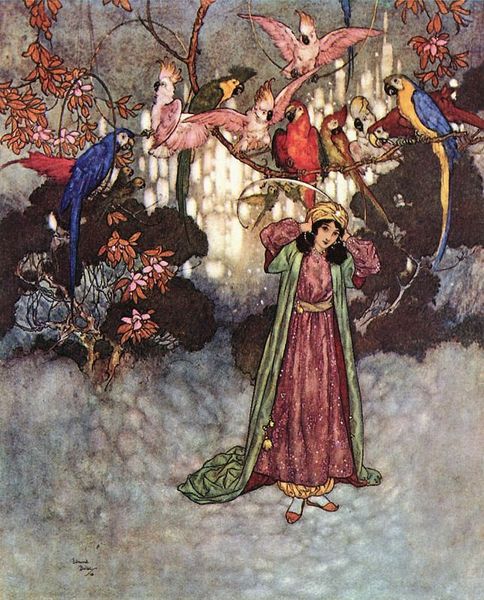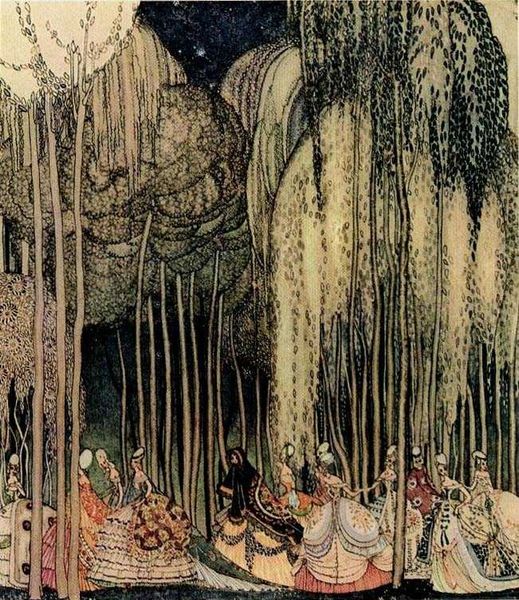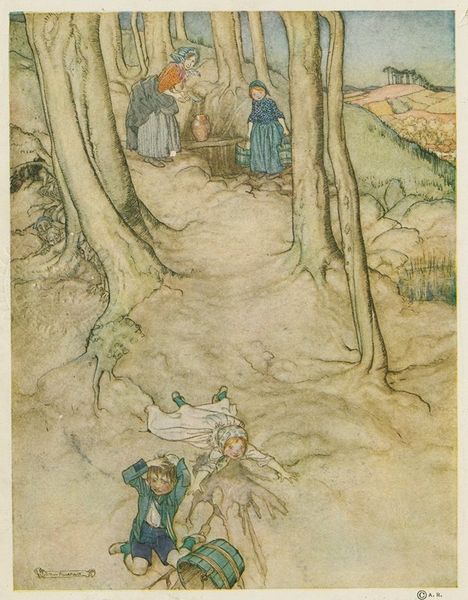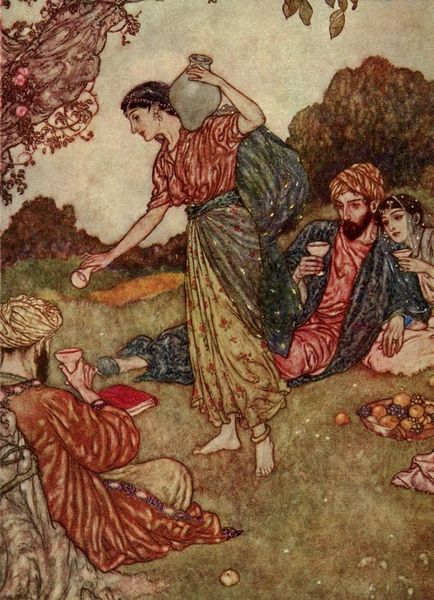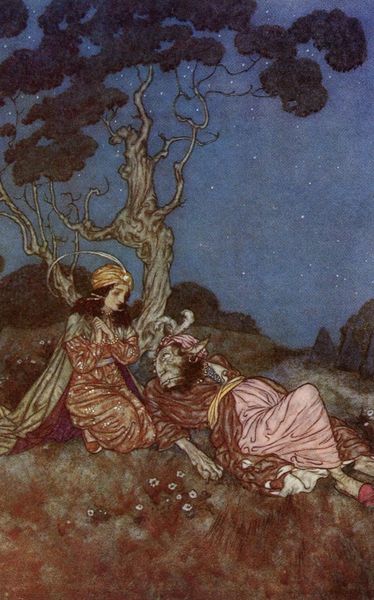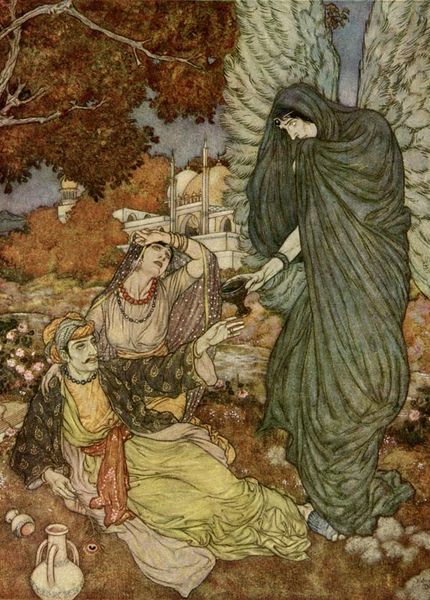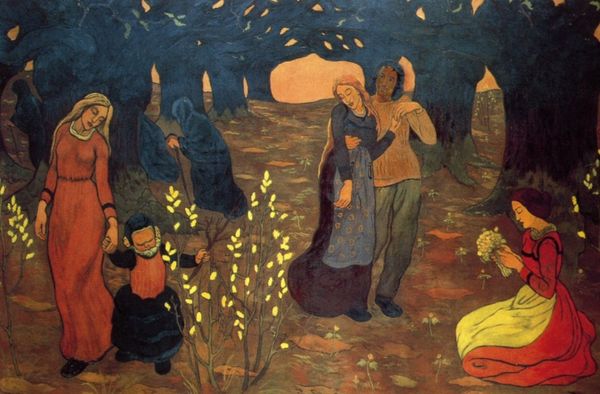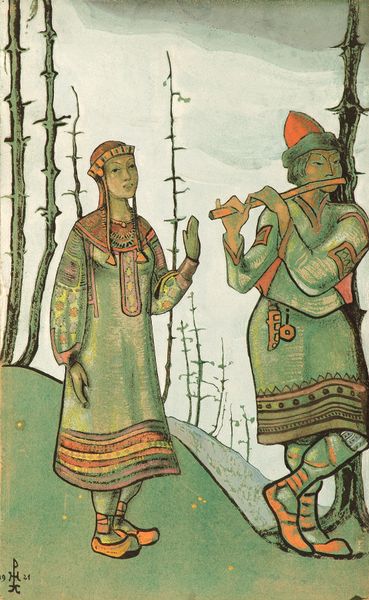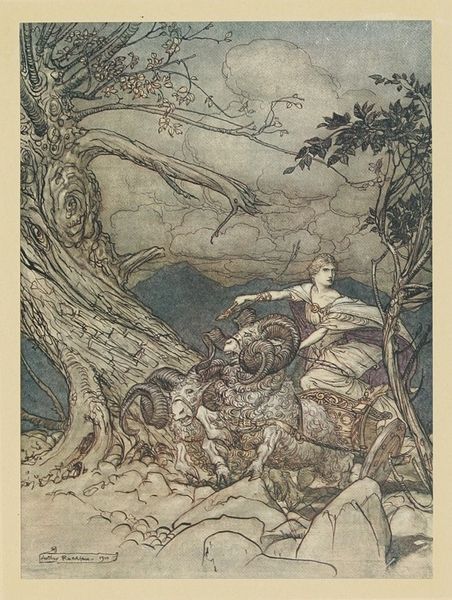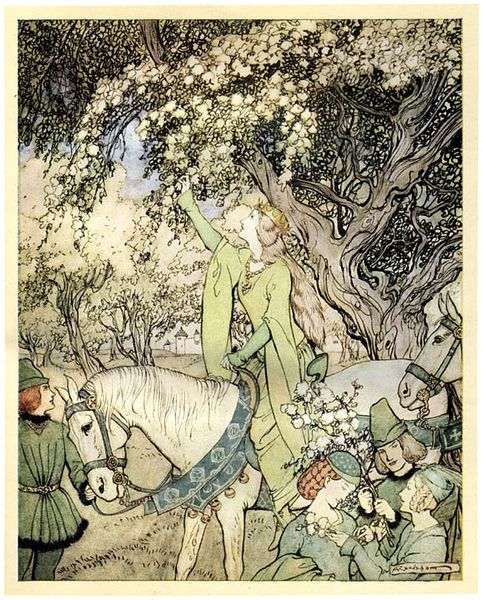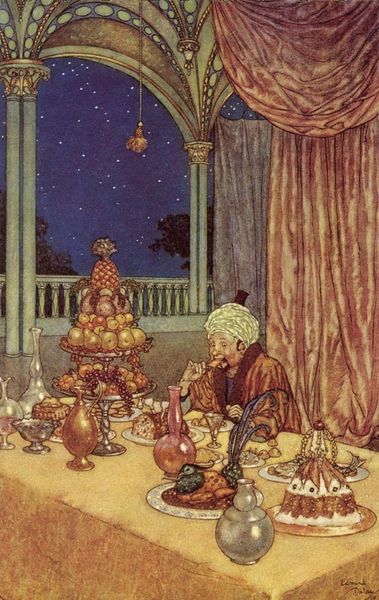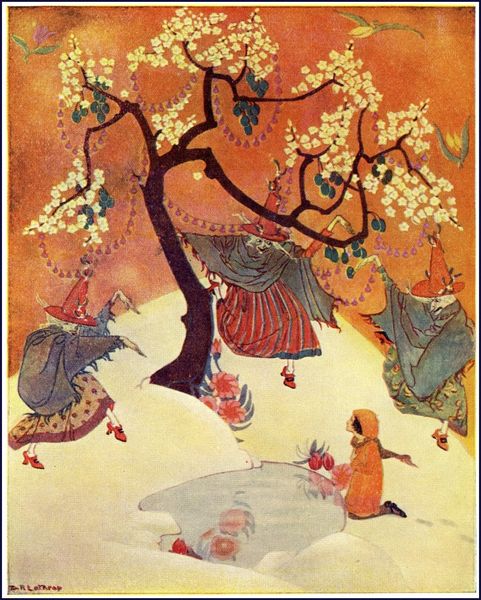
watercolor
#
fairy-painting
#
narrative-art
#
landscape
#
watercolor
#
coloured pencil
#
romanticism
#
watercolour illustration
#
watercolor
Copyright: Edmund Dulac,Fair Use
Curator: I'm struck by the opulence, even through the somewhat muted tones of Edmund Dulac’s "The Beast's Castle - from Beauty and the Beast." It looks like a fairy-tale illustration. Editor: Yes, the narrative element is key. Notice how the very materiality—the watercolor and possibly coloured pencil medium—lends itself to the softness and dreamlike quality of a storybook scene. There is something very manufactured about fantasy art. Curator: I agree that watercolor provides the visual character; the ethereal quality helps transport us. Beyond that, I am wondering how Dulac engaged with available materials and printing technologies in producing his illustrations? What was the division of labour in making books in this period, especially in the mass-produced children’s books. Editor: While considering those questions of process, allow me to make some basic observations about colour relationships and pictorial organization. The cool blues and purples of the foreground figures are in contrast with the warmer earth tones of the distant castle. Also note how our eyes go toward the top-right of the composition because of the overall lightening of tone there and also to the silhouette of the towered architectural pile in that spot. Curator: Let's think about who this piece was for. Given the original context of “Beauty and the Beast” and other related narratives from that time. What norms were reinforced and which were subverted? The materials, reproduction and production are all part of how the art worked to uphold and challenge these power dynamics. Editor: Certainly the act of production contributes, but let’s focus for a moment on what can be described. Look at how Dulac uses very precise lines and forms mixed with diluted pigment. There's a visual harmony to the picture, that is hard to ignore, regardless of context. Curator: Visual harmony appeals, of course, to potential buyers, but the bookmaking apparatus itself would shape the distribution, readership, and thus the meaning of the illustrations within its pages. Editor: Perhaps. I am personally captivated by the artwork. Curator: And I believe considering the means of its making—the available labour and the target audience, opens doors to deeper readings and a greater understanding of its enduring influence. Editor: Indeed.
Comments
No comments
Be the first to comment and join the conversation on the ultimate creative platform.
